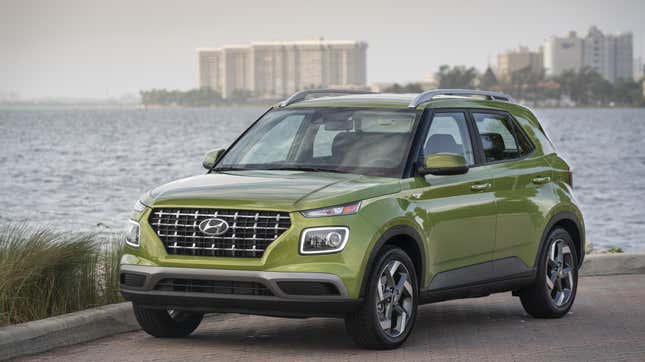
Sometimes you don’t know what you’ll miss until it’s gone. It first occurred to me in 2020 that we were witnessing the disappearance of inexpensive cars, and back then there were still 17 brand new cars available for under $20,000. Late last year that number was down to six. A few months ago there were four. Now, with the announced discontinuation of the Mitsubishi Mirage and Kia Forte, and the Nissan Versa reportedly ending its tenure next year, that leaves just the Hyundai Venue as the least expensive car in America with a starting MSRP of $19,900 — before you add on the mandatory $1,395 freight delivery charge.
There’s nothing particularly wrong with the Hyundai Venue. It’s a perfectly average automobile, about what you’d expect from the least expensive car on sale in the U.S. It is also one of the most average, slowest accelerating, and most forgettable cars on the market right now. Oh, dear.
Where have all the cheap cars gone? Well, with rampant price hikes being the norm over the last four years, most of the cars on the Under 20 list in 2020 are now considerably over 20. Others, especially the small hatchbacky things, were killed off. There is a gap in the market that automakers seemingly aren’t interested in filling, and that’s the small inexpensive entry-level affordable car.
With average transaction prices still sky high, interest rates basically on the moon, average monthly payments up in the stratosphere, and more Americans than ever defaulting on their car loans, things are looking pretty bleak in the new car market in 2024. There’s not much you can buy without incurring a huge amount of debt, and you’ll be paying more than ever for the least expensive cars on each dealer lot.
The working class American is forced to exist in a state of unaffordable individual transportation and non-existent public transit. In many cases Americans are paying more for their car payments every month than they do on housing. You have to work more hours to make payments on the thing you use to get to work. It’s a vicious cycle.

